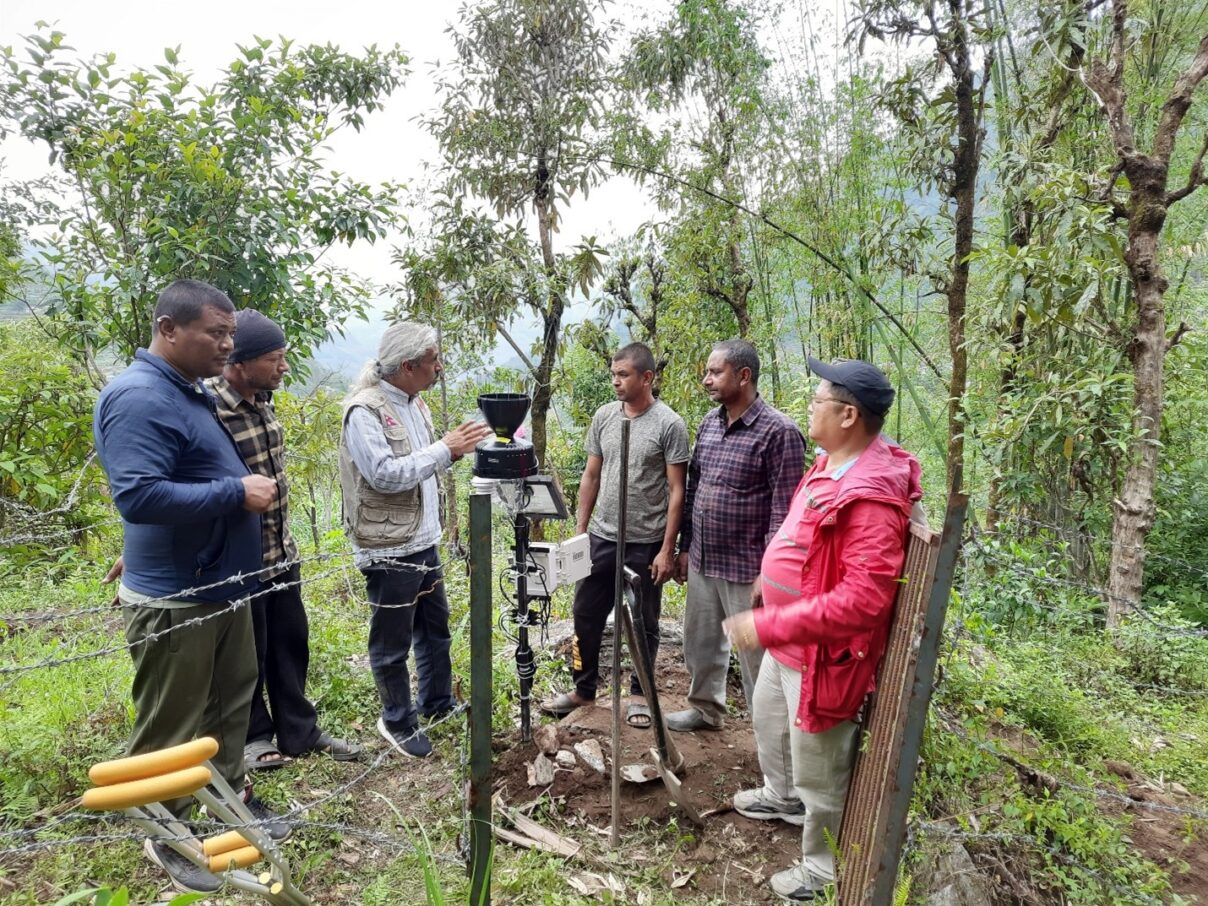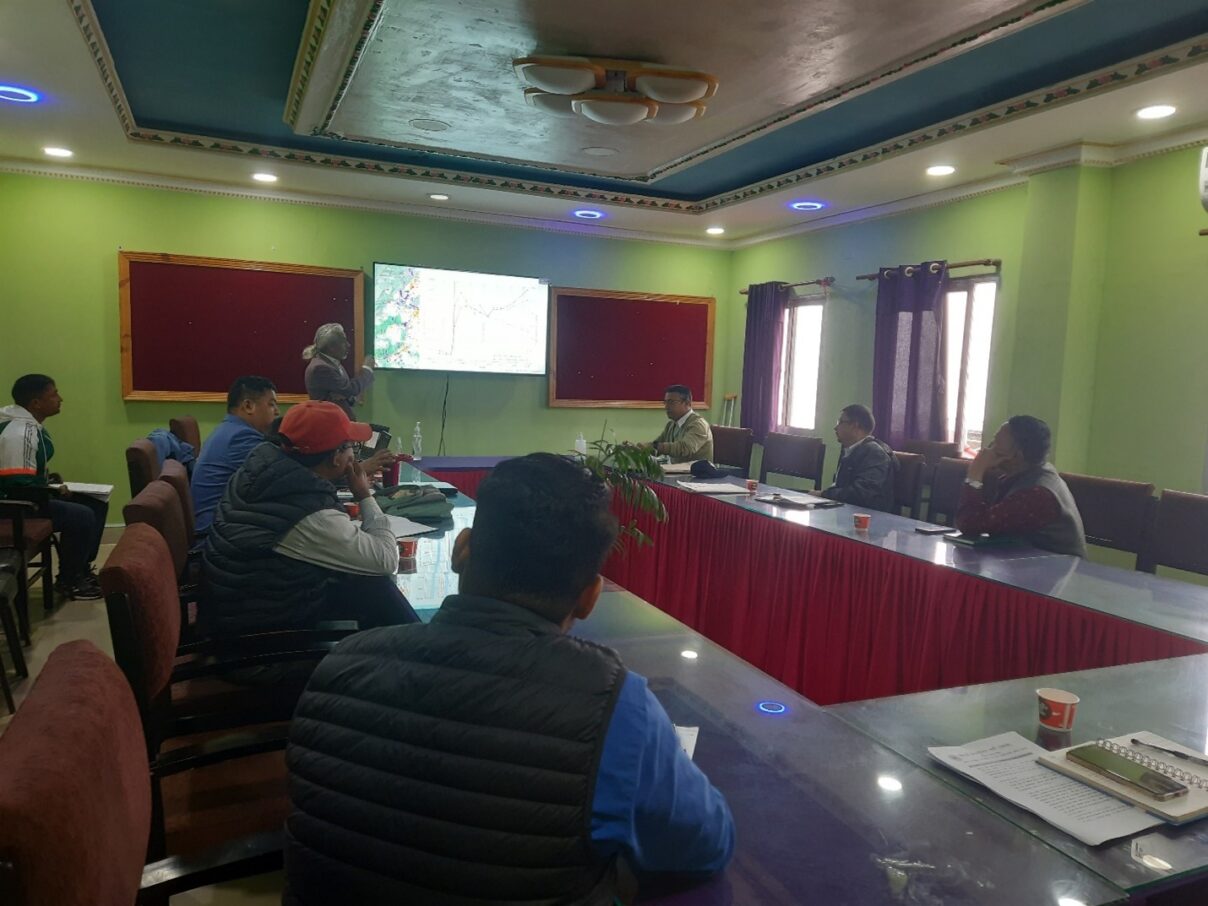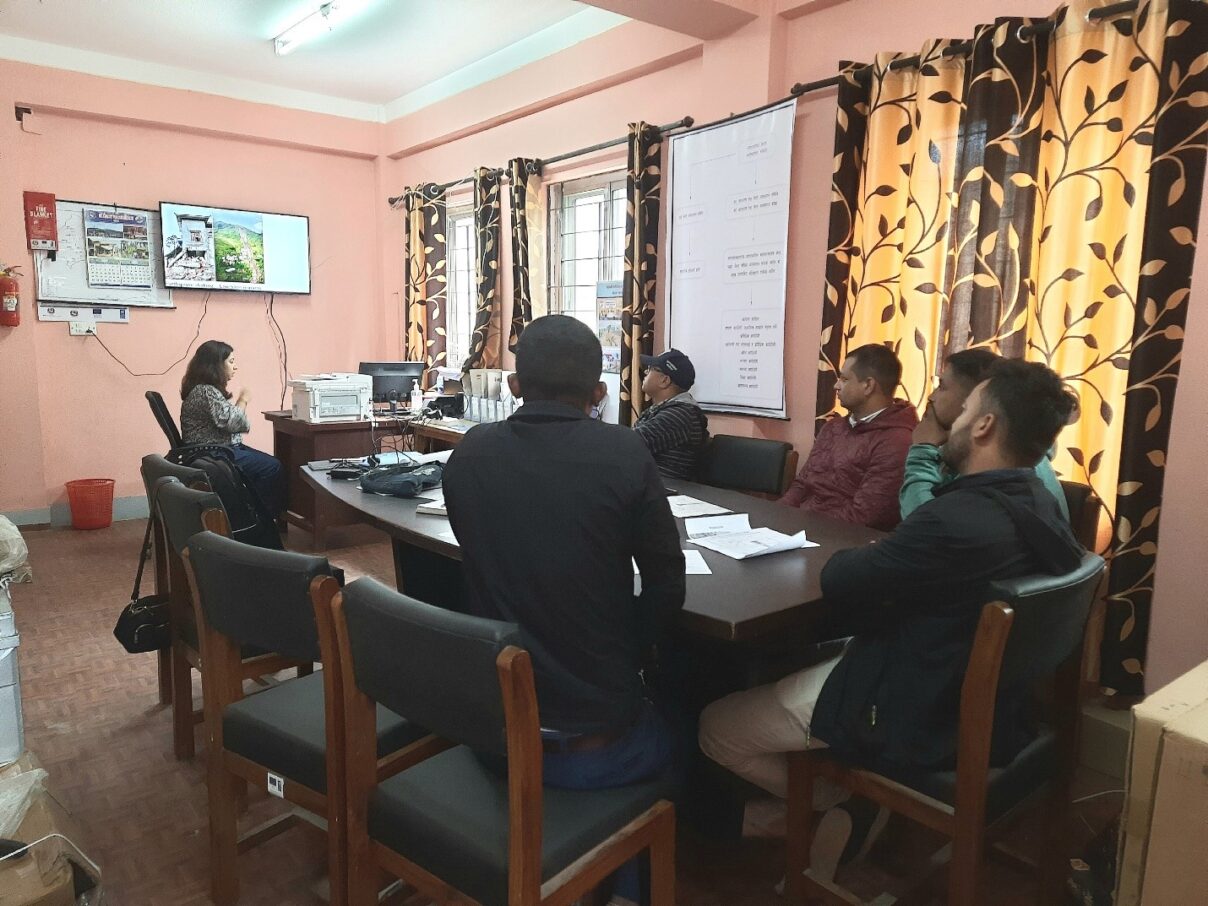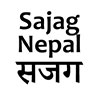Meetings with Bhimeshwor Municipality focusing on slope monitoring equipment
In late May this year Gopi Basyal and Ganesh Jimee from NSET, along with Anuradha Puri from Social Science Baha, went to Bhimeshwor with a major objective of sharing ongoing project activities mainly focusing on the details of the slope monitoring equipment. As part of the research, slope monitoring equipment has been installed at Phedi and Bosimpa, Ward 1, Bhimeshwor municipality, which raised curiosity among the municipal officials. During the initial phase only the acoustic emission sensors were installed, so the visit was also planned to install the weather station. Besides that, it was a good opportunity for the Sajag-Nepal project to develop a formal relationship with the municipality. The municipality organized a meeting on 25 May where members of the municipal disaster management committee were present. In the meeting, Anuradha formally introduced the Sajag-Nepal project, the activities conducted in Bhimeshwor over the last two years, and the planned activities for the next year. Anuradha also shared about the work that she has been doing in wards 1 and 3 for two years: conducting an ethnographic study where she is engaged in various methods of studying disaster; informal conversations and observations; and interviews of local people, elected representatives, local government, and different stakeholders regarding the disaster preparedness and disaster risk reduction and management.

In the meeting, Gopi gave a presentation on the slope monitoring equipment. He shared about the process of installing the equipment, its functionality , what we can expect from it, and how it could be helpful to know the reasons and ratio for the movement of land. Besides that, he also shared about the activities that NSET has performed over these two years under the Sajag-Nepal project in four different municipalities, including the 3D modelling which was done in Bhote Koshi rural municipality as a part of risk mapping, landslide inventory work, drone surveys, and many others.

The municipality was positive and very interested in the slope monitoring equipment and the other activities that have been conducted in Bhimeshwor under the Sajag-Nepal project. After being informed about the weather stations and their respective function, the municipality requested Sajag to link the weather station’s real-time data with the municipality website and live display of the data in the Municipal Emergency Operation Center (MEOC) screen. Besides that, the municipality also requested to prepare 3D models of the whole municipality, if not at least a ward. They were also happy with the ongoing research within the municipality and had no objections in continuing the research. They also shared that in Ward 1, two different sites for a landslide early warning system have been identified in coordination with Tayar Nepal. The municipality wanted us to discuss and conduct a meeting with the related organizations to avoid duplication and to learn from and complement each other’s work.

Anuradha and Sweata then visited Dolakha again in early July to address the request of the municipality to connect the real-time data with the MEOC. The meeting was scheduled for 5th and 6th of July. On the 5th of July after we reached the municipality office around 2 pm, we were welcomed by a technical team from the municipality with a refreshing cup of tea in a municipality canteen. A total of eight people including Sweata and Anuradha had an informal chat (chiya guf) including the introduction of each individual and the aim we hold, and the schedule and agenda of the meeting. After being done with tea we moved to the MEOC room and started the program. As the team was new besides the two municipal staff (disaster focal person and MEOC volunteer), they requested information about Sajag-Nepal. Sweata started the presentation by introducing the Sajag-Nepal project. She talked about the research being done on landslide inventory mapping and development of the automated landslide mapping tool, multi-hazard risk modelling etc. We continued with a presentation about the slope monitoring equipment where Sweata shared about its function and Anuradha shared the process of installation and also the limitations. The meeting was engaging and interactive. Lots of curiosities were raised from the side of the municipality and those were tried to address beautifully by Sweata and Anuradha.
After being cleared on the function of the slope monitoring equipment, the municipality decided to get access to the three functions among the five functions of the equipment: temperature, rainfall, and humidity. Although the soil moisture data is equally important, the municipal representative decided not to display the real-time data as it could be confusing to the general public, and the risk of misinterpreting the data would be high. So, considering their request, dashboards of both sites were created and shared. Sweata shared the link with the municipality and the municipality has decided to keep that link on the municipality website and display it on the MEOC screen 24/7. There was also a discussion about sending an alert to the mobile phones of the related authorities and stakeholders. Bhimeshwor Municipality is a cooler area with rare cases of temperature exceeding 30oC in summer, and so the threshold for the temperature alert was finalized as 30 degree and rainfall as 30mm in 24 hrs to send the alert messages.

In the meeting the disaster focal person also suggested conducting the meeting with the Bhimeshwor Alert team (i.e., the equipment installation team from Tayar). The municipality also requested to provide suggestions in terms of our research findings so that they could improve from their side in disaster risk reduction and management. Apart from this, the municipality also requested to suggest and coordinate the related stakeholders so that there would be a good linkage with the municipality and national level on disaster management. The disaster focal person also took us to meet the mayor and chief executive officer and brief them about Sajag-Nepal and about the slope monitoring equipment. He also explained the importance of the equipment in the agriculture sector to the agriculture officer as it will help measure the temperature. After the presentation was done, Anuradha and Sweata along with the technical staff and MEOC focal person from Bhimeshwor went to Phedi, one of our monitoring sites, where Anuradha described the process and the equipment installed there along with their respective function. In the site, there was also the presence of community members who are engaged with Sajag-Nepal. The question was raised by the municipal staff about the security of the equipment, but the locals assured them that the equipment is the responsibility of community members, so they don’t need to worry about the security of the equipment.

